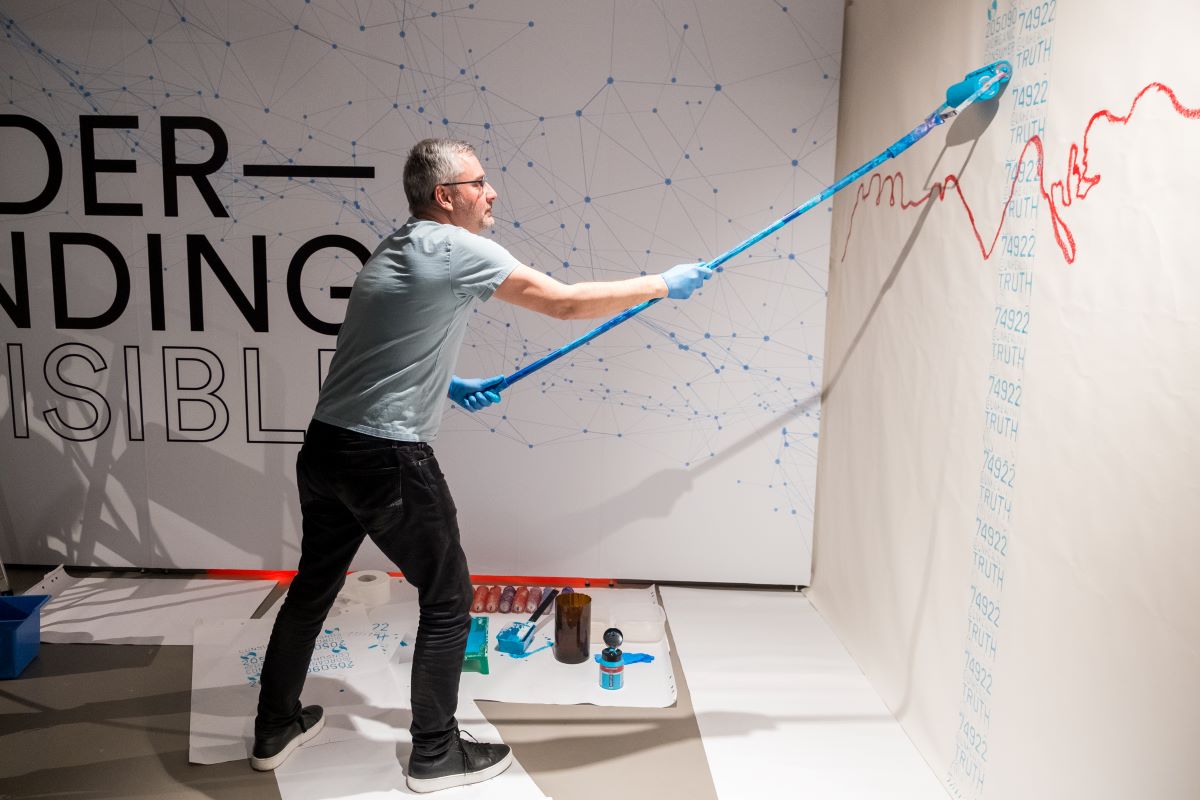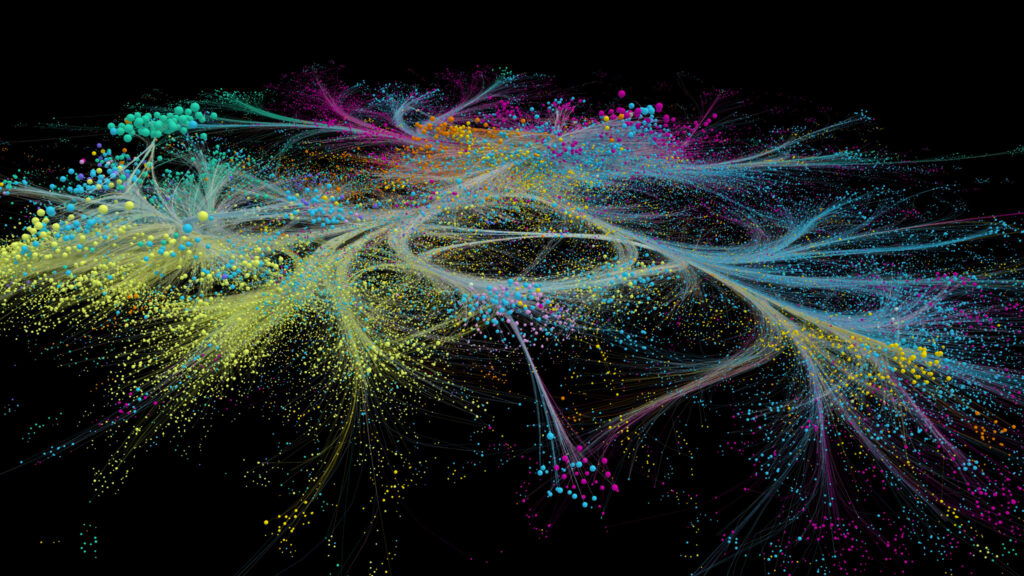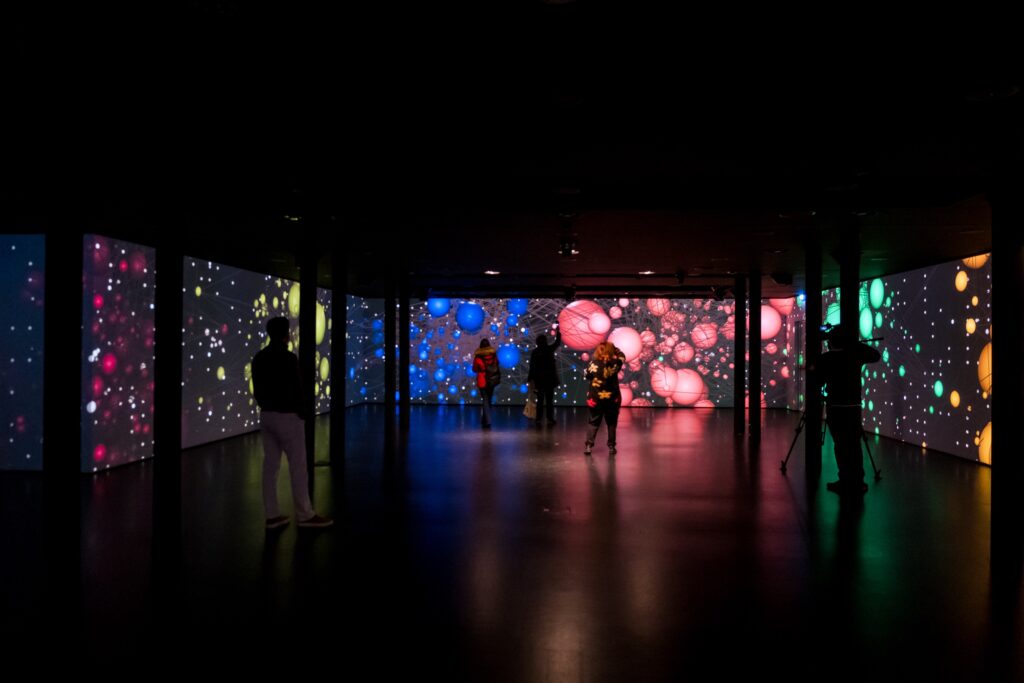Post
Understanding the Invisible | Albert-László Barabási
With The Art of Connection, MEET presents, for the first time in Italy, the corpus of works created at BarabásiLab, a famous research laboratory founded by Albert-László Barabási and focused on the visualisation of networks and nodes and characteristic of web dynamics, in an exhibition with a strong visual impact that focuses on Barabási’s talent for combining scientific intuition and visionary thinking.

From an early age, Albert-László Barabási‘s propensity for scientific subjects became apparent. He attended a mathematics and physics school in Csikszereda, then concentrated on physics and engineering at the University of Bucharest, later earning a master’s degree at Eotvos Lorand University in Budapest and a PhD in physics at Boston University. In 1995, after a stint as a postdoctoral associate at IBM’s Watson Reserach Center, he became an assistant professor of physics at the University of Notre Dame in Indiana. Despite an early and stellar academic career, Barabási’s dream has always been to become an artist and, as the homepage of his beloved Laboratory shows, he has succeeded: “the question of what is art or science is absolutely meaningless. They are both part of the same journey of discovery”. In fact, from the very first data visualisation invented in 1995 to the present day, Barabási has not only invented a new field of network science, but has developed a veritable graphic, artistic language, first two-dimensional, then with three-dimensional sculptures, and finally, thanks to advances in virtual reality, in four dimensions.

It is difficult to summarise the milestones of his career, only by opening the BarabásiLab website does one immediately realise the number and complexity of the research he has carried out. Certainly the 2001 work on the role of the network in the survival of a cell (more precisely a yeast cell) was fundamental. To observe how its survival depends on the most highly connected proteins, the team for the first time accurately depicted the actual architectural arrangement of cellular connections using a network visualisation software tool designed to explore social networks, thus explicitly showing how proteins in a cell interact with one another. Equally fundamental was the study of human diseases carried out in collaboration with the Dana-Farber Cancer Institute at Harvard Medical School in 2005. The resulting map The Human Disease Network in 2007 captured the common genetic origins of different diseases and was the first time BarabásiLab encoded two sets of information at each node. The size of the node represented the number of genes linked to a particular disease. The colour of the node, on the other hand, indicated the class of the disease. In 2016, Barabási began to transform the tools of network science into the world of art. Using an enormous amount of data on the exhibition history of half a million artists, BarabásiLab unveiled the invisible connections that shape their careers. The Art Network captures the web of influence of thousands of institutions (museums and galleries) around the world: they are connected if an artist whose work has been exhibited at the museum is also subsequently exhibited at the gallery, or vice versa. The Art Network was also one of the first attempts to present this constellation as a data sculpture, i.e. in 3D. Today, BarabásiLab’s visual language is experimenting with the fourth dimension (which would also be the ‘natural’ dimension of networks), through the new technologies made available by augmented reality and virtual reality. The new visual expressions produced by their research will certainly guarantee new chapters in this ever-expanding story.

In the Immersive Room there is a site-specific installation that provides precisely a comprehensive and universal view of the creativity of this scientist and his laboratory, which exalts his extraordinary and pioneering way of giving life, colour and form to the complex science of data using the tools of a society fuelled by the visual, which finally embodies at its core the cohesive ambivalence of Barabási’s work: an experimental artist with a decidedly scientific approach.
The Solitude of Multitudes | Marco Buongiorno Nardelli
Music is not a complement. It sounds like a banal statement, but it is only fair to point out how in the multidisciplinary works that characterise digital art, where technological skills, artistic sensibilities and scientific knowledge are intertwined in truly inextricable and connected ways, music plays a median role of enormous importance, which it has always had in the performing arts and multimedia. It is an electroacoustic work by composer Marco Buongiorno Nardelli. It permeates Albert-László Barabási’s exhibition in the Immersive Room with sound, a fundamental testimony to fully understanding the exhibited work of which it is a part.
